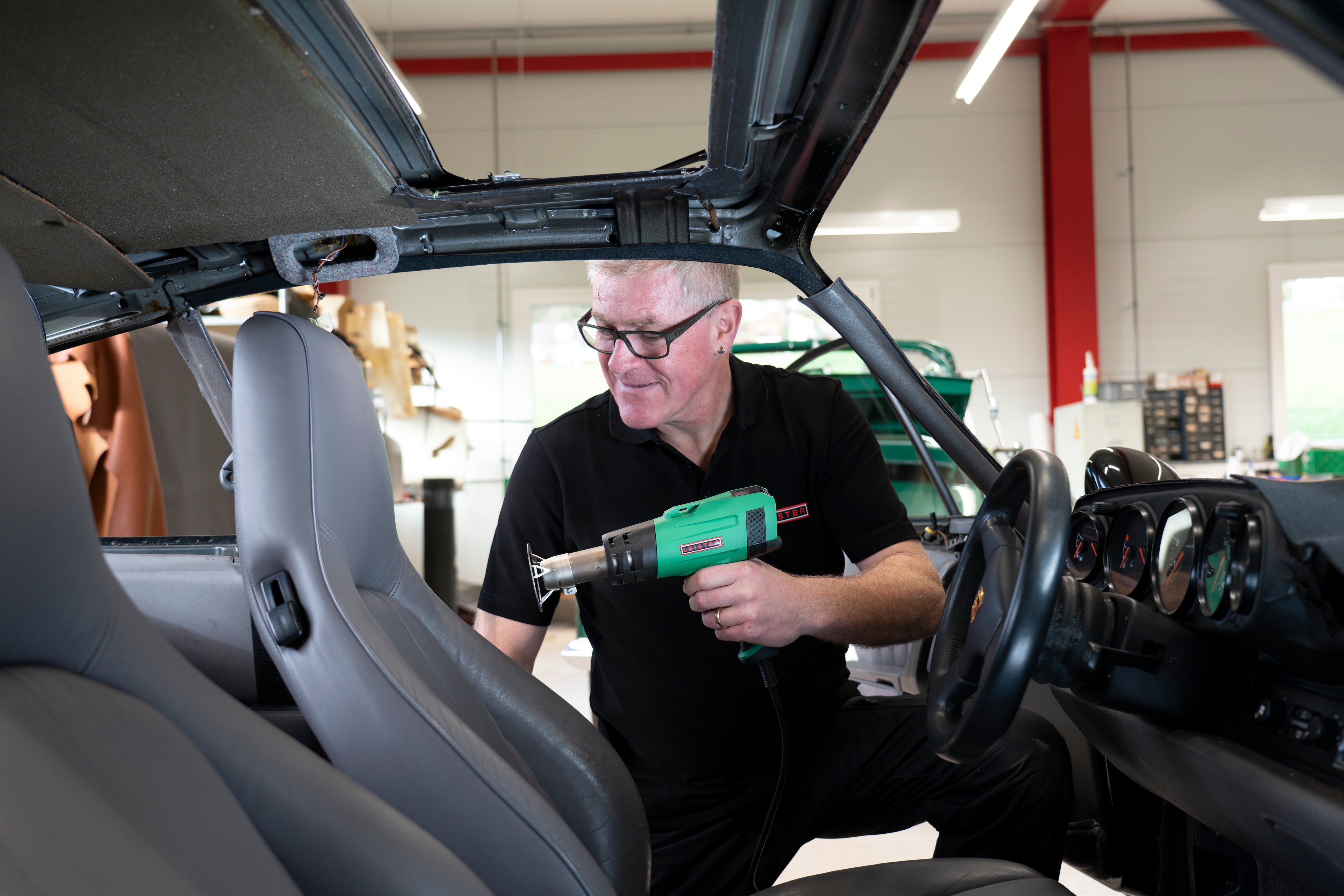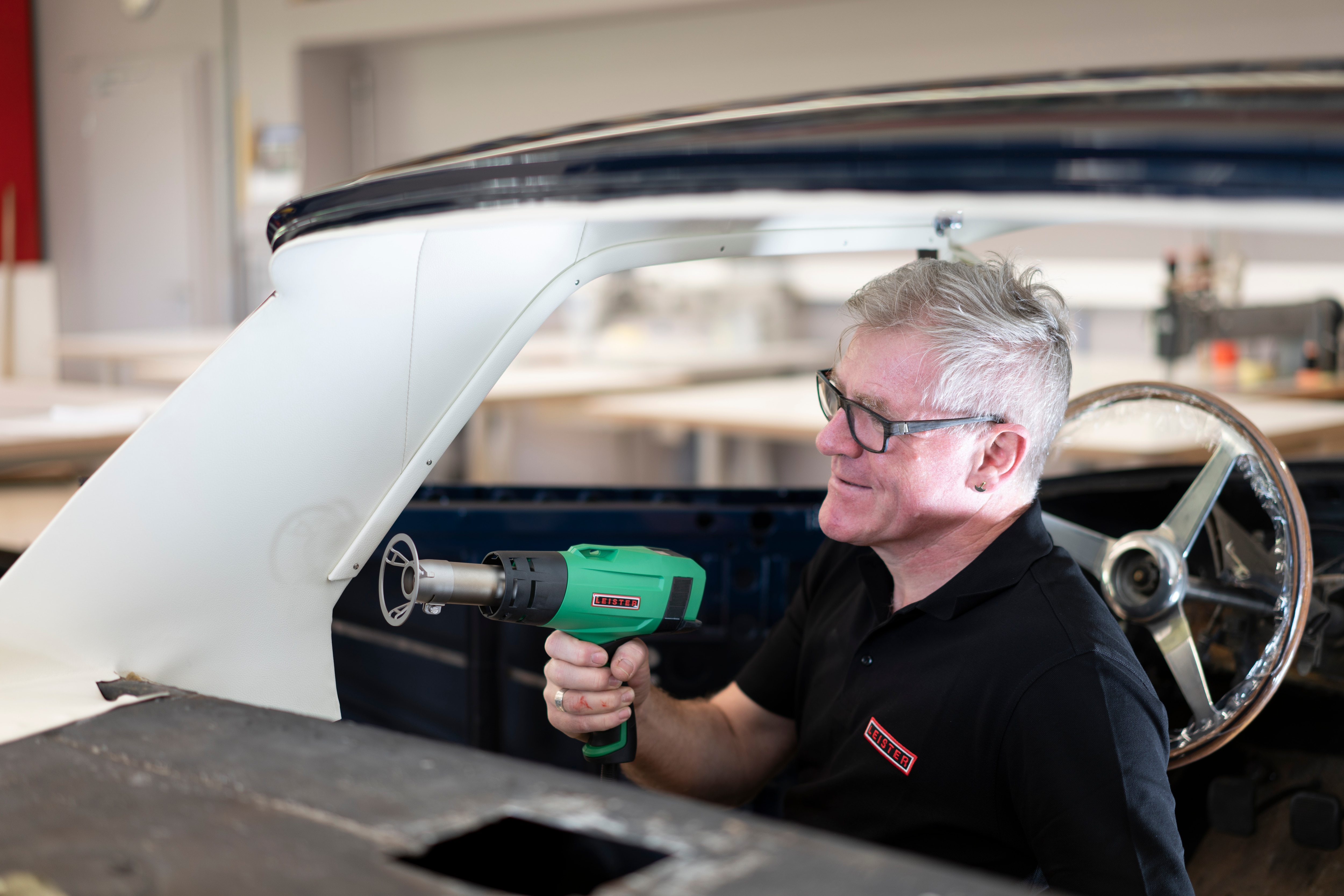

Heat guns are used during installation to give the seats their final shape. When the seats are upholstered, real or imitation leather is stretched, thanks to the heat, and can then be pulled onto the seat much easier. Folds, creases and uneven sections in the cover material are simply ironed out with warm air.

With the help of heat, such folds and creases can be removed without having to cover the entire seat again. Within minutes, the cover material used (usually vinyl) can be smoothed with a heat gun. This makes the seats appear to be brand new again. The vehicle interior is also often covered with leather, especially in older cars. With a heat gun, vehicle ceilings and consoles can be perfectly covered with real leather or imitation leather.